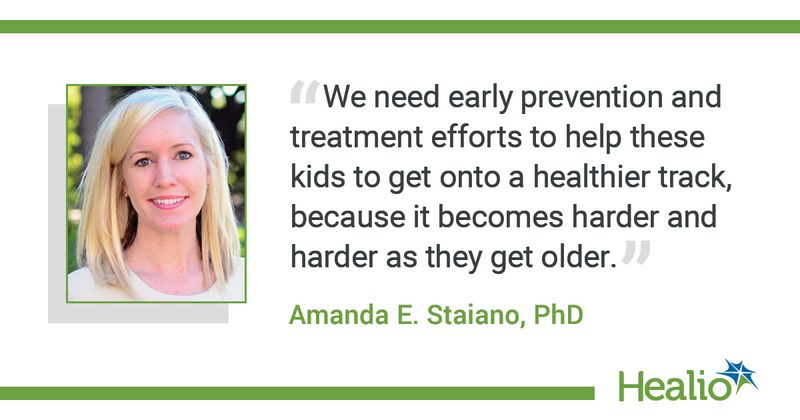Prevalence of pediatric obesity increases to 21%
Click Here to Manage Email Alerts
The prevalence of pediatric obesity in the U.S. rose from 17% to 21% between 2011 and 2020, according to findings published in JAMA Pediatrics.
Amanda E. Staiano, PhD, associate professor of pediatric obesity and health behavior at Pennington Biomedical Research Center in Baton Rouge, Louisiana, co-authored the letter.

“It's really important in this country that we see obesity prevalence to try to track to see how many of our children and teenagers have obesity,” Staiano told Healio.
“We've seen for several years, it's going on decades now, that the prevalence of obesity, the number of kids who have obesity keeps creeping upward,” Staiano said. “But no one had looked to see in more recent years if that's still the case, [or just looked] over the past decade, to see how we're doing.”
Staiano and co-author Kathy Hu examined data from the National Health and Nutrition Examination Survey (NHANES), a surveillance study performed across the U.S., examining heights and weights and ages of the 14,967 children and adolescents included in the analysis.
“When you're looking at weight in children, you actually look at a percentile, which means you're comparing the kid’s height and weight reference data for the age and the sex of the child,” Staiano said. “Any kids that are above the 95th percentile are considered to have obesity. So back when these percentiles first came about, you would expect only about 5% of kids to be above the 95th percentile. But what we're finding now is 21% of kids are above the 95th percentile. That’s four times as many as you would expect.”
In 2011, 17% of the surveyed children fit the percentile for obesity, a number that increased to more than 21% in 2021.
“What's really troubling is we know that as kids develop obesity early in life, they are at much higher risk for developing heart disease, diabetes, cancer, asthma, and many other diseases,” Staiano said. “We see this in kids; even middle and high school kids are developing these diseases.”
“We really need early prevention and treatment efforts, to help these kids to get onto a healthier track, because it becomes harder and harder as they get older and into adulthood to help people to lose weight,” Staiano said.

